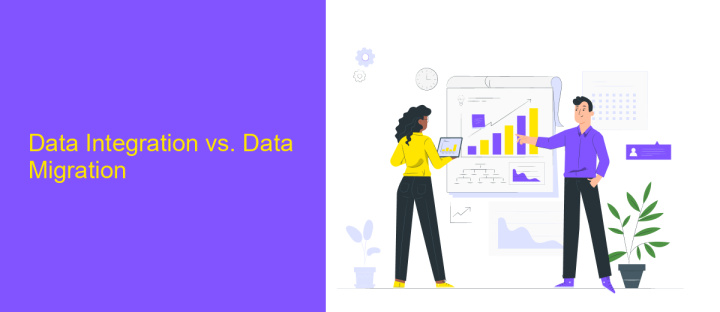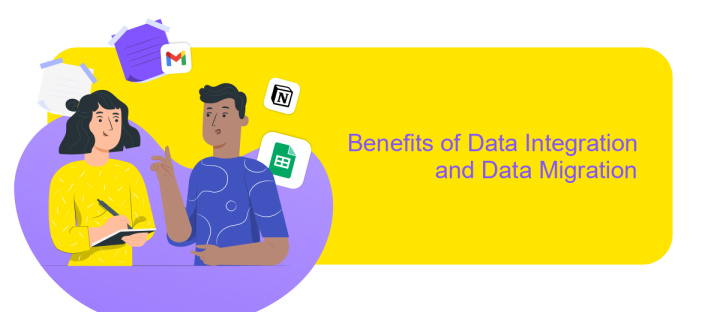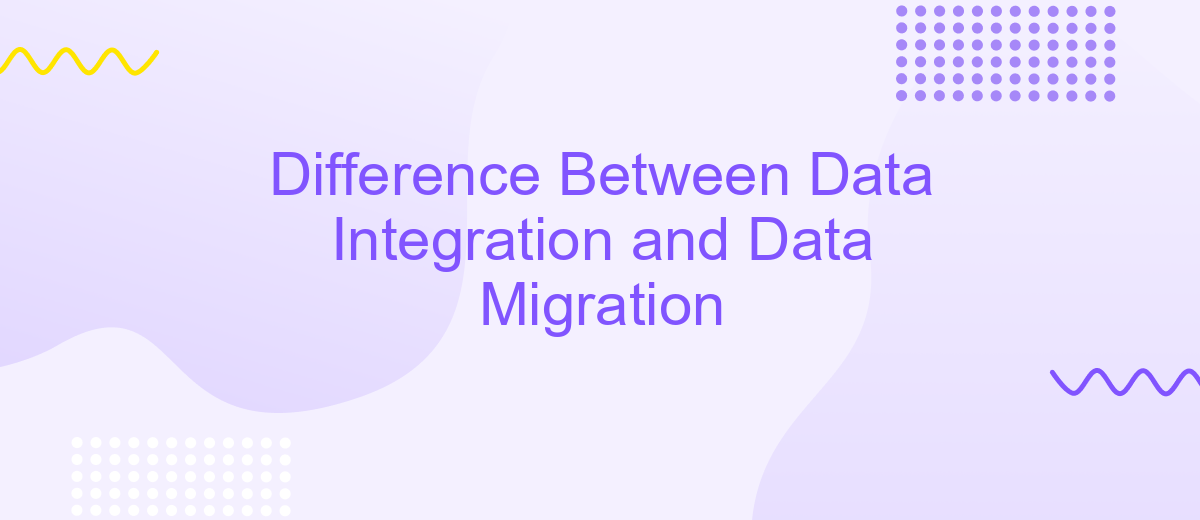Difference Between Data Integration and Data Migration
Data integration and data migration are two crucial processes in the realm of data management, each serving distinct purposes and involving different methodologies. While data integration focuses on combining data from various sources to provide a unified view, data migration involves transferring data from one system to another. Understanding these differences is essential for effective data strategy implementation.
Introduction
In today's data-driven world, organizations are constantly seeking ways to manage and utilize their data more effectively. Two commonly discussed concepts in this context are data integration and data migration. Although they may sound similar, they serve distinct purposes and involve different processes. Understanding the difference between these two can significantly impact how businesses handle their data strategies and achieve their objectives.
- Data Integration: The process of combining data from different sources to provide a unified view.
- Data Migration: The process of moving data from one system or storage location to another.
Recognizing the unique characteristics and applications of data integration and data migration is crucial for organizations aiming to streamline their data management practices. While data integration focuses on creating a cohesive data ecosystem, data migration is often a one-time event aimed at transferring data efficiently. This article will delve deeper into these concepts, outlining their key differences and use cases.
Data Integration vs. Data Migration

Data integration and data migration are two distinct processes that serve different purposes in the realm of data management. Data integration involves combining data from different sources to provide a unified view, enabling businesses to make more informed decisions. It often requires the use of specialized tools and services, such as ApiX-Drive, which streamline the process by automating data flows between various applications and systems. This ensures that data is consistently updated and readily available for analysis, leading to improved operational efficiency and better business outcomes.
On the other hand, data migration refers to the process of transferring data from one system to another, often during system upgrades, consolidations, or when moving to a new platform. The primary goal of data migration is to ensure that data remains intact and accessible in the new environment. Unlike data integration, which focuses on real-time data accessibility and usability, data migration is typically a one-time event that requires meticulous planning and execution to avoid data loss or corruption. Both processes are crucial for maintaining data integrity and supporting business growth, but they address different needs and challenges within an organization.
Key Differences

Data integration and data migration are two distinct processes that are often confused but serve different purposes in data management. Data integration involves combining data from different sources to provide a unified view, while data migration focuses on moving data from one system to another. Understanding the key differences between these processes is essential for effective data management.
- Objective: Data integration aims to unify data from multiple sources for analysis and reporting, whereas data migration is concerned with transferring data to a new environment.
- Scope: Integration deals with ongoing data synchronization and consistency, while migration is typically a one-time event.
- Complexity: Data integration often involves real-time data processing and transformation, whereas data migration may require extensive planning but is executed in a finite timeframe.
- Tools: Different tools are used; ETL (Extract, Transform, Load) tools are common for integration, while data migration tools are specialized for transferring large volumes of data efficiently.
- End Goal: The end goal of data integration is to improve data accessibility and usability across systems, while data migration aims to retire legacy systems and consolidate data.
In summary, data integration and data migration serve different roles within an organization. While integration focuses on combining and utilizing data from multiple sources, migration is about moving data to new systems. Understanding these differences helps organizations choose the right approach for their data management needs.
Benefits of Data Integration and Data Migration

Data integration and data migration are crucial processes for organizations looking to optimize their data management and leverage insights for better decision-making. While data integration involves combining data from different sources into a unified view, data migration focuses on transferring data from one system to another. Both processes offer unique advantages that can significantly enhance business operations.
One of the main benefits of data integration is the ability to provide a comprehensive view of organizational data. This unified view helps in improving data quality, ensuring consistency, and enabling more informed decision-making. On the other hand, data migration is essential for organizations upgrading their systems or moving to cloud-based solutions, ensuring that critical data is seamlessly transferred without loss or disruption.
- Enhanced data accessibility and usability
- Improved data quality and consistency
- Facilitated system upgrades and cloud transitions
- Reduced operational costs and increased efficiency
- Better compliance with regulatory requirements
In summary, both data integration and data migration play pivotal roles in modern data management strategies. By leveraging these processes, organizations can achieve a more streamlined, efficient, and compliant data environment, ultimately driving better business outcomes.
Conclusion
In conclusion, understanding the difference between data integration and data migration is crucial for any organization aiming to optimize its data management processes. Data integration focuses on combining data from different sources to provide a unified view, enabling seamless access and analysis. On the other hand, data migration involves transferring data from one system to another, ensuring that the data remains intact and functional in its new environment.
Choosing the right approach depends on the specific needs and goals of the organization. Tools like ApiX-Drive can greatly facilitate these processes by offering automated solutions for integrating and migrating data across various platforms. By leveraging such services, businesses can achieve more efficient data workflows, reduce manual effort, and ensure data accuracy and consistency. Ultimately, both data integration and data migration are integral to maintaining a robust and agile data infrastructure.
FAQ
What is the main difference between data integration and data migration?
When should you use data integration over data migration?
Can data integration and data migration be used together?
What are some common challenges in data integration?
How can automation tools help with data integration?
Do you want to achieve your goals in business, career and life faster and better? Do it with ApiX-Drive – a tool that will remove a significant part of the routine from workflows and free up additional time to achieve your goals. Test the capabilities of Apix-Drive for free – see for yourself the effectiveness of the tool.

